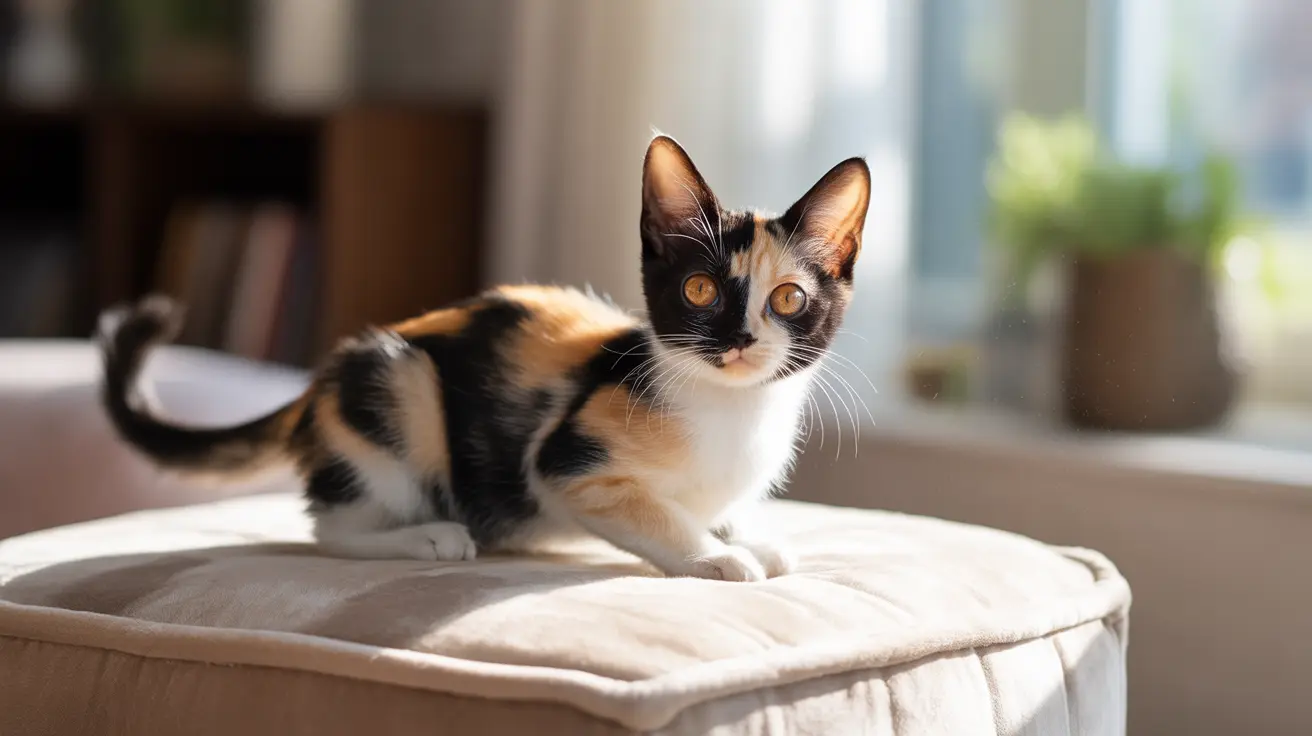Introduction
Munchkin cats, beloved for their distinctively short legs, come in an incredible array of colors and patterns that make each one unique. These charming felines can display virtually every coat variation found in the domestic cat world, from striking calicos to elegant solid colors. Whether you're considering adding a Munchkin to your family or simply fascinated by these extraordinary cats, understanding their diverse color possibilities adds another layer of appreciation for this special breed.
In this comprehensive guide, we'll explore the fascinating world of Munchkin cat colors, their genetic inheritance, health considerations, and proper care requirements for different coat types.
Common Munchkin Cat Colors and Patterns
Solid Colors
Munchkin cats can display a range of stunning solid colors, including:
- White
- Black
- Blue (a dilute form of black)
- Cream
- Red
- Brown
- Lavender
Multi-Color Patterns
Beyond solid colors, Munchkins showcase various intricate patterns:
- Calico (tri-colored patches of black, orange, and white)
- Tortoiseshell (mottled black and orange)
- Bicolor combinations
- Tuxedo (black and white in a formal pattern)
- Various tabby patterns (striped, spotted, or swirled)
Genetics Behind Munchkin Cat Colors
The diverse coloration in Munchkin cats follows the same genetic principles as other domestic cats. Their signature short legs are caused by a dominant gene mutation, but this has no impact on their coat colors. Instead, multiple genes control pigmentation, pattern distribution, and color intensity.
Particularly interesting is the genetics of calico Munchkins, which are almost exclusively female due to color genes being linked to the X chromosome. Male calicos are extremely rare, occurring in only about 1 in 3,000 cases.
Health Considerations Related to Coat Colors
While most coat colors don't affect health, there are some important considerations:
White Cats and Hearing
White Munchkins, especially those with blue eyes, have a higher risk of congenital deafness. The statistics are significant:
- 22% of white cats without blue eyes may be deaf in at least one ear
- 40% of white cats with one blue eye may experience deafness
- Up to 85% of white cats with two blue eyes could be affected
Other Color-Related Health Factors
Interestingly, black Munchkins may have genetic advantages, including potential resistance to certain feline diseases and possibly longer lifespans. However, more research is needed to fully understand these benefits.
Grooming Requirements by Coat Type
Different coat colors and lengths require varying levels of maintenance:
- Short-haired Munchkins need weekly brushing
- Long-haired varieties require more frequent grooming to prevent matting
- White cats may need extra attention to keep their coat clean and bright
- All colors benefit from regular grooming to maintain coat health and minimize shedding
Frequently Asked Questions
What are the most common coat colors and patterns seen in Munchkin cats?
The most common Munchkin cat colors include solid shades (black, white, blue), calico, tortoiseshell, and various tabby patterns. They can display any color or pattern found in domestic cats.
Are there any health risks associated with certain Munchkin cat colors, like white coats and deafness?
Yes, white Munchkins, particularly those with blue eyes, have a higher risk of congenital deafness. The risk increases significantly when a white cat has two blue eyes.
How can I identify a calico Munchkin cat, and why are most calico cats female?
Calico Munchkins have distinct patches of black, orange, and white. They're almost always female because the calico pattern requires two X chromosomes, which males typically don't have.
Do Munchkin cats' coat colors affect their personality or behavior?
No scientific evidence suggests that coat color influences personality or behavior in Munchkin cats. Their temperament is shaped by genetics, socialization, and environment rather than color.
How should I care for and groom Munchkin cats with different coat lengths and textures?
Short-haired Munchkins need weekly brushing, while long-haired varieties require more frequent grooming. All cats benefit from regular brushing to prevent matting and reduce shedding. White cats may need extra cleaning to maintain their bright coat.
Conclusion
The world of Munchkin cat colors is vast and fascinating, offering something for every preference. Whether you're drawn to the elegance of a solid-colored coat or the uniqueness of a calico pattern, understanding these color variations helps in both appreciation and care of these special cats. Remember that regardless of color, every Munchkin deserves proper care, attention, and regular grooming to maintain their beautiful coat.






